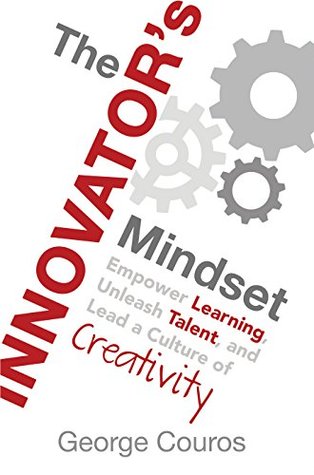More on this book
Community
Kindle Notes & Highlights
Read between
April 24 - July 4, 2017
These teachers want to be innovative, but, instead of connecting and learning from others around the world, let alone with colleagues in their own schools, they spend their time in staff meetings that often seem irrelevant to the heart of teaching.
As leaders, if we ask teachers to use their own time to do anything, what we’re really telling them is: it’s not important.
An O2 commercial with the tagline “Be More Dog” illustrates how a decision can lead to extreme and positive changes.
We are spending so much time telling our students about what they can’t do that we have lost focus on what we can do.
Learning and innovation go hand in hand. The arrogance of success is to think that what you did yesterday will be sufficient for tomorrow.—William Pollard[13]
“How Great Leaders Inspire Action,”[14] he explained that all great organizations start with their “why” and then move toward the what and the how.
believe education’s why is to develop learners and leaders who will create a better present and future. When I use the term leaders, I’m not talking about bosses but people who have influence over and can make an impact on the world.
I’m defining innovation as a way of thinking that creates something new and better. Innovation can come from either “invention” (something totally new) or “iteration” (a change of something that already exists), but if it does not meet the idea of “new and better,” it is not innovative.
Individualizing education and starting with empathy for those we serve is where innovative teaching and learning begins.
“Change is inevitable. Growth is optional.”
The innovator’s mindset can be defined as the belief that the abilities, intelligence, and talents are developed so that they lead to the creation of new and better ideas.
The world only cares about—and pays off on—what you can do with what you know (and it doesn’t care how you learned it).
“Identity Day.” On that day, the
kids shared about the things they loved outside of school in a type of display or presentation.
Things such as blogging, Edmodo, Google apps, and using Twitter hashtags in the classroom provide opportunities for our students
to learn from each other.
A better approach is to get feedback throughout the year, not just in the form of grades but through conversations.
Yes, it is important, if not crucial, to listen and respond to our students’ input, but it is equally important to help them become resilient and face adversity.
But few schools focus on encouraging students or educators to “Drop Everything and Reflect.” How might we all be impacted if we took time out of each day to the think about what we have learned and how it impacts our next steps?
(If you want to learn more about blogs and digital portfolios, you can check them out on my portfolio at bit.ly/blogasportfolio.)
DEAR time should be an opportunity not only for reading but to also “Drop Everything And Reflect.” John Dewey is quoted as having said, “We do not learn from experience; we learn from reflecting on experience.”
Quality should always override quantity. But that isn’t what happens in schools where teachers feel inundated by new initiatives and a myriad of organizational objectives.
Before you add a new initiative, ask yourself: Is this adding or subtracting to the already full plates of the educators I serve? Is this new program or initiative going to help us achieve our vision and, specifically, what
are the goals for how it will impact learning?
If we’re going to go deep, rather than wide and shallow, we have to change the mindset that every new idea, even good ideas, must be immediately implemented.
Ultimately, as leaders, we must recognize, as we’re adding what’s important and removing what’s unnecessary from our staff members’ “plates,” that every single person’s plate size is different.
Derek Sivers illustrates this point in a beautiful, short video titled, “Obvious to You. Amazing to Others.”


